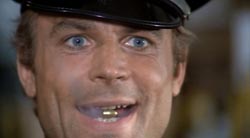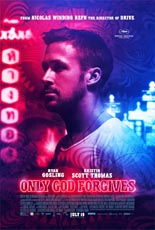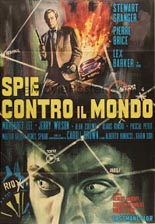
 Anthology films largely reside in the realm of horror, only occasionally landing in comedy and science fiction. But spy movies? It happened — in Italy, of course — in Spies Against the World, aka Killer’s Carnival and, seriously, Where Are You Taking That Woman. In the wraparound tale, a wanted and armed murderer (Peter Vogel, The Black Cobra) of “four young and beautiful girls” breaks into the study of a professor (Patton’s Richard Münch), who warns his captor what a life of crime will get him by telling him three tales. Each conveniently takes place in a renowned locale across the globe — lavish spots to which I cannot afford to travel.
Anthology films largely reside in the realm of horror, only occasionally landing in comedy and science fiction. But spy movies? It happened — in Italy, of course — in Spies Against the World, aka Killer’s Carnival and, seriously, Where Are You Taking That Woman. In the wraparound tale, a wanted and armed murderer (Peter Vogel, The Black Cobra) of “four young and beautiful girls” breaks into the study of a professor (Patton’s Richard Münch), who warns his captor what a life of crime will get him by telling him three tales. Each conveniently takes place in a renowned locale across the globe — lavish spots to which I cannot afford to travel.
In the first segment, in Vienna, a woman insists on seeing David Porter (Stewart Granger, 1950’s King Solomon’s Mines), because the crab apple is the only one who can find the men responsible for killing her knew-too-much journalist brother.
 Rome if you want to for Spies’ inventive middle section, which sees a secret agent (Pierre Brice, Apache Gold) receive his orders Mission: Impossible-style, on vinyl made of spaghetti. He’s to track down some material from a gang, but story is secondary; goofy comedy is the main course as crosses and double-crosses are held together with thick layers of slapstick.
Rome if you want to for Spies’ inventive middle section, which sees a secret agent (Pierre Brice, Apache Gold) receive his orders Mission: Impossible-style, on vinyl made of spaghetti. He’s to track down some material from a gang, but story is secondary; goofy comedy is the main course as crosses and double-crosses are held together with thick layers of slapstick.
Finally, detective Glenn Cassidy (Lex Barker, The Torture Chamber of Dr. Sadism) finds his investigation of beached corpses in San Francisco takes him to Rio de Janeiro during its Carnival celebration, where the president is the target of an assassination plot. Yes, the two are connected, and it all leads to an electrifying finale on a merry-go-round. Eagle eyes should watch for the future Nosferatu himself, Klaus Kinski, wiping his sweaty face in the background of this one.
Spies Against the World deserves exploring for being such an obscurity, but the puffery is also tremendous fun for those with an affection for ’60s swinging spies that proliferated in James Bond’s wake. Naturally, the scenery is terrific — both the destinations and the delightful beauties who grace them, including Karin Dor (You Only Live Twice) and Margaret Lee (Venus in Furs), whose passports beg for stamping. —Rod Lott

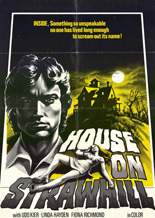
 After nailing down a cool half-mil on his debut, novelist Paul Martin (Udo Kier,
After nailing down a cool half-mil on his debut, novelist Paul Martin (Udo Kier, 
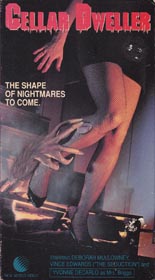
 Don Mancini created two horror villains in the fall of 1988. One, of course, was Chucky, as seen in
Don Mancini created two horror villains in the fall of 1988. One, of course, was Chucky, as seen in 
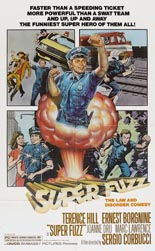
 I have warned my kids that whatever pieces of popular culture they like today, they’re bound to wonder what they were thinking, 20 years from now. I speak from experience, having revisited
I have warned my kids that whatever pieces of popular culture they like today, they’re bound to wonder what they were thinking, 20 years from now. I speak from experience, having revisited 